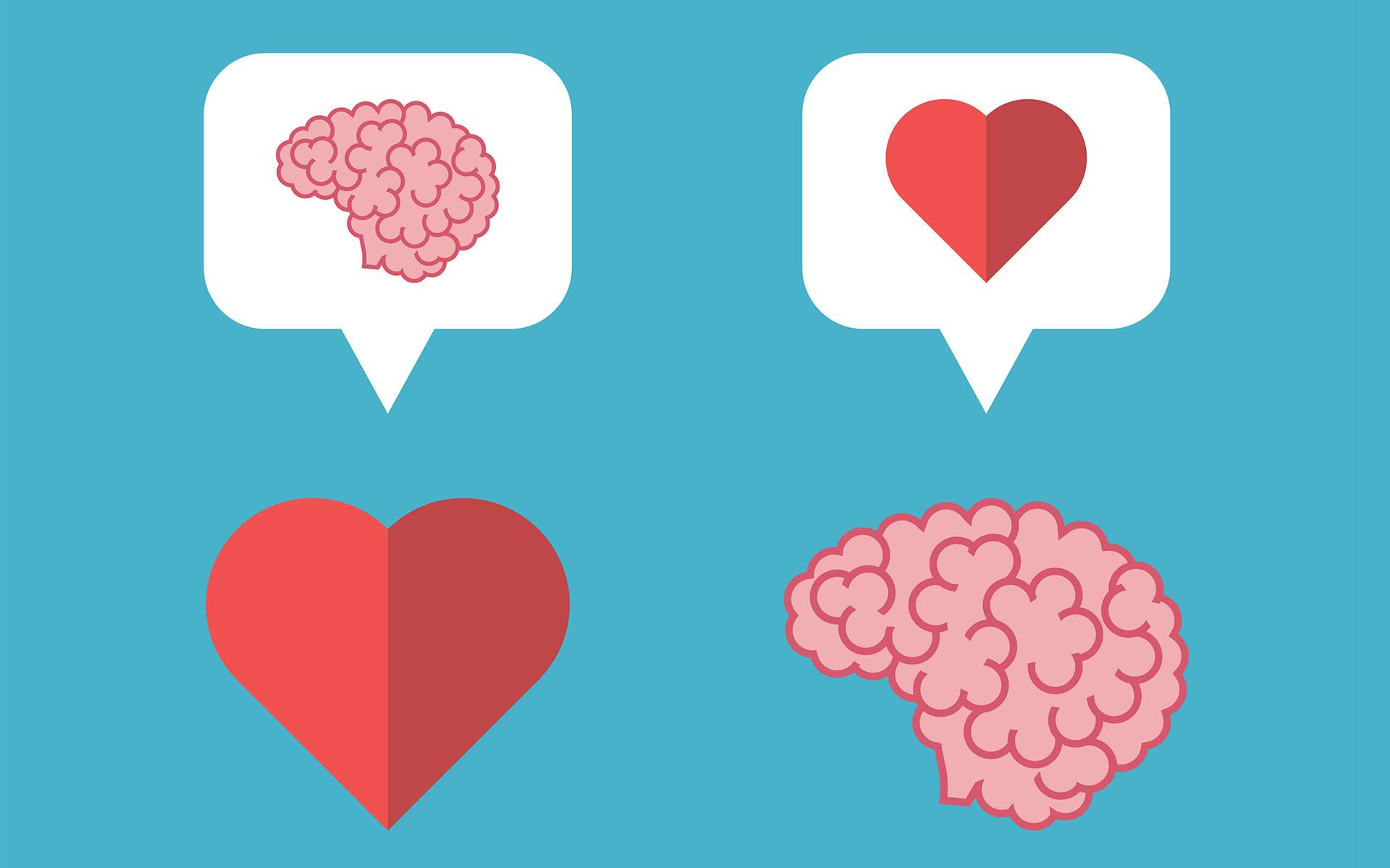When presented with difficulty, a first reaction may be to ward off or ignore unpleasant emotions. It’s normal. However, with practice, we can learn to lean on the comfort of safe spaces—or meditation spaces—to instead engage with them directly. One of the essential qualities of mindfulness is being with whatever comes up, rather than running away from the challenges of emotion.
In this short video, founding editor Barry Boyce answers our questions about emotional health and how we can turn toward our feelings.
A Q&A with Mindful Founding Editor Barry Boyce
Mindful: If we let ourselves feel our emotions, one concern may be that we won’t be able to stop feeling them. If we’ve avoided our emotions for a long time, will it be too much to handle? What would you recommend?
Barry Boyce: The fear that our emotions will overtake us and rule our lives (or at least a significant chunk of our time) is indeed one of the reasons we seek mindless distraction. Being kind to ourselves, repeatedly, is job one. Mindfulness practice is not about aggressively “tackling” our emotions in a fight to the death. If we’ve been suppressing something for a long time and mindfulness begins to bring it up into our conscious awareness—as it will—the key instruction is to notice it and move on. When it comes up again, maybe seconds later, we do the same. This approach of a little bit at a time, moment by moment, reduces the emotional wallop by breaking it into momentary pieces, rather than treating it as one big permanent thing, which it is not.
It never pays to push ourselves to the brink in the hopes of gaining freedom or insight.
This is easy to say, but it does take a bit of ongoing gentle effort—leavened with a lot of kindness toward ourselves—to touch the emotion and let it go. Touch it, and let it go. If we are really overwhelmed and breaking down, we may need the help of a friend or a counselor. It never pays to push ourselves to the brink in the hopes of gaining freedom or insight. Easy does it. If you’re wounded, attend to the wound, or get the help you need to heal.
At some point, when we feel safer, we can explore our emotional landscape further, with the benefit of the repeated noticing we’ve been doing. But that is more awareness and inquiry practice, as opposed to straight mindfulness.
Coping Mechanisms and Suppressing Emotions
Mindful: Sometimes ignoring our feelings can be a coping mechanism in stressful times. Can we suppress our feelings sometimes, but also open up to them the rest of the time? Is “not suppressing emotions” an all-or-nothing deal?
BB: An excellent and delicate question. As noted above, first and foremost, it’s vital to be kind to ourselves—again and again and again. So, when emotions threaten to overwhelm us, we can respond to them with some form of “Yes, I know you’re there, but now is not the time for me to go there.” You may have to do that repeatedly. That kind of attitude doesn’t mean you are suppressing or ignoring the emotion. You are, in fact, noticing it and acknowledging it. Touching it and moving on. That’s mindfulness.
When emotions threaten to overwhelm us, we can respond to them with some form of “Yes, I know you’re there, but now is not the time for me to go there.”
When you notice it simply like that, you generally lessen its power to overwhelm you a bit. By contrast, suppressing—actively, energetically pushing it down and away—increases that power.
Is Emotional Intelligence a Luxury?
Mindful: For some, working on emotional intelligence seems impractical—or a like luxury. What are some examples of ways we might use emotional intelligence in our daily lives?
BB: To appreciate why emotional intelligence might not be an impractical luxury, it will first help to define what we mean by “emotional intelligence.” According to the Yale Center for Emotional Intelligence, this notion first emerged when two emotion researchers, Peter Salovey and John Mayer, “lamented that theories of intelligence had no systematic place for emotions,” which inspired them to articulate “a theory that described a new kind of intelligence: the ability to recognize, understand, utilize, and regulate emotions effectively in everyday life.” In a pivotal paper, published in 1990, they described this revolutionary idea, which they called “emotional intelligence.” The idea caught on, and Salovey and his laboratory at Yale became recognized leaders, pushing the field toward new discoveries and innovations. Five years later, Dan Goleman’s book Emotional Intelligence: Why It Can Matter More than IQ, became a bestseller and popularized the idea further. When Google began its mindfulness program, Search Inside Yourself, in 2007, it emphasized emotional intelligence. In that respect, the program followed the belief that mindfulness and awareness practice as well as loving-kindness and compassion practices could enhance our emotional intelligence.
When we have less ability to “recognize, understand, utilize, and regulate emotions effectively in everyday life,” it quite simply creates pain, for others and for ourselves. Finding ways to lessen pain is not impractical nor a luxury. It’s the healthy thing to do.
How do we find ways to use emotional intelligence in our daily lives? From a mindfulness perspective, the key habit that can help us cultivate more emotional intelligence is pausing, which lets the momentum of our emotions to be interrupted, so we have a moment to notice how they are showing up in our body and mind. As we do that more often—a little bit of regular mindfulness practice helps develop the pausing habit—the choices we make concerning how we express and act on our emotions may be more “intelligent.” When they’re not so intelligent and we make a mess? We might notice that and learn from our encounter, rather than blindly stumbling toward wherever our emotions lead us.
We featured the Yale Center for Emotional Intelligence’s assistant director, Dena Simmons, in the April 2019 issue of Mindful and on mindful.org. The center’s director, Marc Brackett, recently released his book Permission to Feel: Unlocking the Power of Emotions to Help Our Kids, Ourselves, and Our Society Thrive, which is reviewed on mindful.org.
Ingrained Ideas About Emotion
Mindful: Men are often taught that crying (or showing nearly any emotion) is too feminine. What can we do to help change this ingrained idea, in ourselves and those around us?
BB: On a very simple level, when a man or boy seems on the verge of tears, we can very gently let them know that’s it’s fine to cry. A word or two or a nonverbal message can often be enough to convey that feeling without having to get too conceptual about it. Quiet listening and warmth go a long way in allowing someone to let their emotion simply be. At least you can respond without judging it as inappropriate.
Changing gender stereotyping on a broader scale raises deep questions that go beyond the scope of personal mindfulness practice. The ways children are socialized and taught what gender means has been explored extensively by many people and form the basis of a variety of programs aimed at social change. One of the most interesting is The Representation Project, started by Jennifer Seibel Newsom (who is married to the current governor of California).
Her film Miss Representation concerns how girls are taught to think about gender in limiting ways, while The Mask You Live In “follows boys and young men as they struggle to stay true to themselves while negotiating America’s narrow definition of masculinity,” according The Representation Project website. Newsome’s most recent film, The Great American Lie, focuses on a social addiction to a certain definition of masculine values, which are held up as superior to those identified as feminine. Newsome has presented on these issues several times at the Wisdom 2.0 conference. The Mask You Live In features the work of Ashanti Branch, who is one of the featured teachers in Mindful’s Mindful30 challenge. These films can be screened by school groups and others interested in gender education.
read more
The Real Danger of Suppressing Your Emotions
A key element of emotional intelligence is the way you regulate your difficult emotions—But not all emotional regulation techniques are created equal.
Read More
How to Test Your Emotional Maturity
Learning the language of emotional maturity is like learning a second language. If you weren’t raised with it, it may take tens of thousands of hours to master.
Read More
Mindful Live Q&A with Sharon Salzberg and Barry Boyce
Join us for live conversations and events featuring leaders in the mindfulness movement.
Read More











